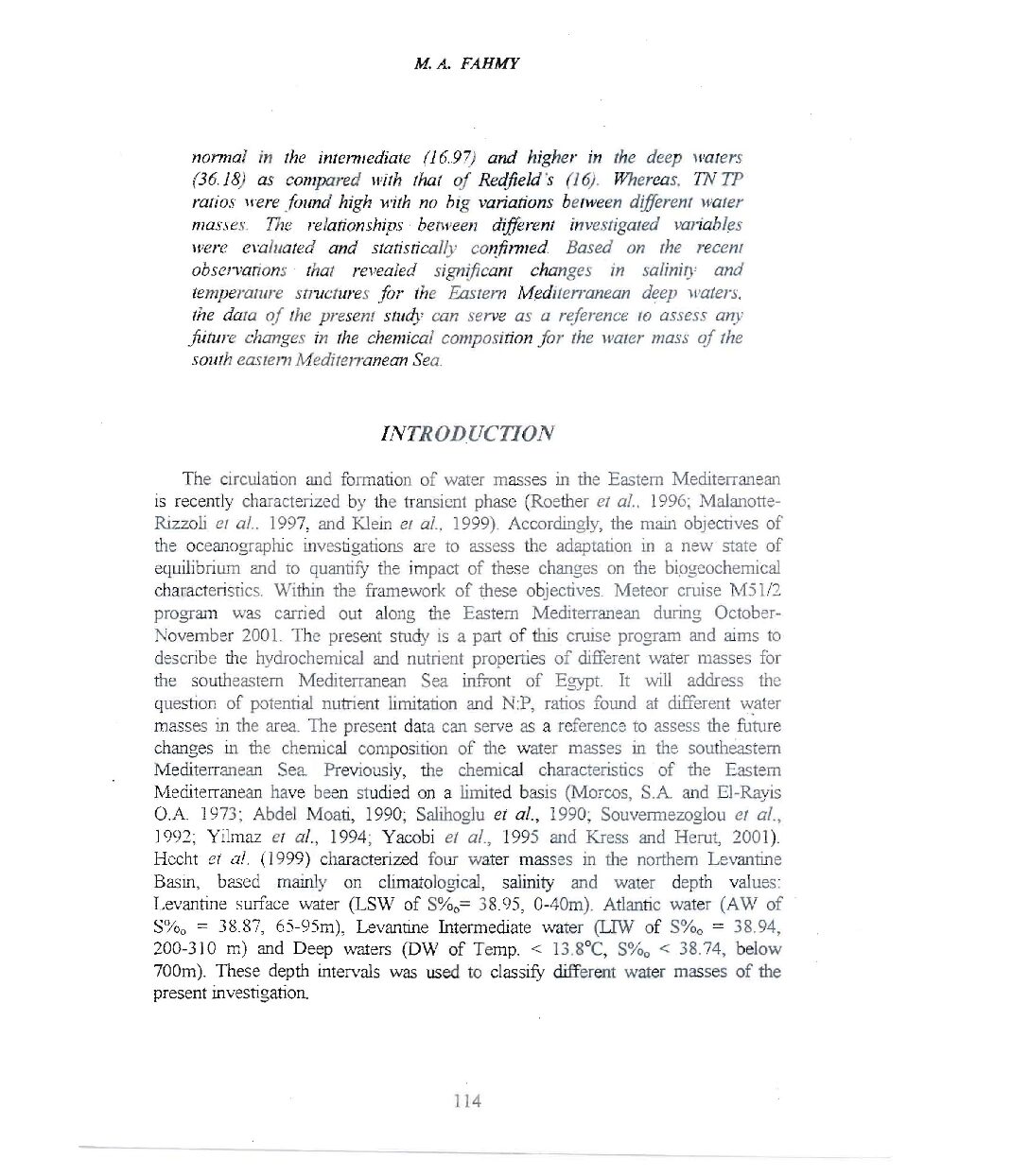Categories
vol-27M.A. FAHMY
nonna! in the intemlediate (J 6.97) and higher in the deep waters
(36.18) as compared with that of Redfield’s (16). Whereas, TN TP
rarios ,rere found high with no biu variations berween different water
masses. The relationships between different investigated variables
were emluated and statistically confimled Based on (he recen!
obsenJations that revealed significant changes in salinit), and
temperawre snuctures for th Eastern MeditelTanean deep waters,
the daw of the present study can serve as a reference to assess any
fiiture changes in the chemical composition for the WaleI’ mass of the
south eastem Mediten-anean Sea.
INTRODUCTION
The circulation and formation of water masses in the Eastern Mediterranean
is recently characterized by the transient phase (Roether et al.. 1996: MalanotteRizzoli et al.. 1997, and Klein et al.. 1999). Accordingly, the main objectives of
the oceanographic investigations are to assess the adaptation in a new state of
equilibriwn and to quantify the impact of these changes on the biogeochemical
characteristics. Within the framework of these objectives. Meteor cruise M5l!2
program was carried out along the Eastern Mediterranean during OctoberNovember 2001. The present study is a part of this cruise program and aims to
describe the hydrochemical and nutrient properties of different water masses for
the southeastern Mediterranean Sea infront of Egypt. It will address the
question of potential nutrient limitation and N:P, ratios found at different v.:ater
masses in the area. The present data can serve as a reference to assess the future
changes in the chemical composition of the water masses in the southeastern
Mediterranean Sea Previously, the chemical characteristics of the Eastern
Mediterranean have been studied on a limited basis (Morcos, S.A and El-Rayis
O.A. 1973; Abdel Moati, 1990; Salihoglu et al., 1990; Souvermezoglou et a!.,
1992; Yilrnaz er aI., 1994; Yacobi et al., 1995 and Kress fuid Herut, 2001).
Hecht et al. (1999) characterized four water masses in the northern Levantine
Basin, based mainly on climatological, salinity and water depth values:
Levantine surface water (LSW of S%o= 38.95, 0-40m). Atlantic water (AW of
S%o = 38.87, 65-95m), Levantine Intermediate water (LIW of S%o = 38.94,
200-310 m) and Deep waters (DW of Temp. < 13.8°C, S%o < 38.74, below
700m). These depth intervals was used to classify different water masses of the
present investigatioll







